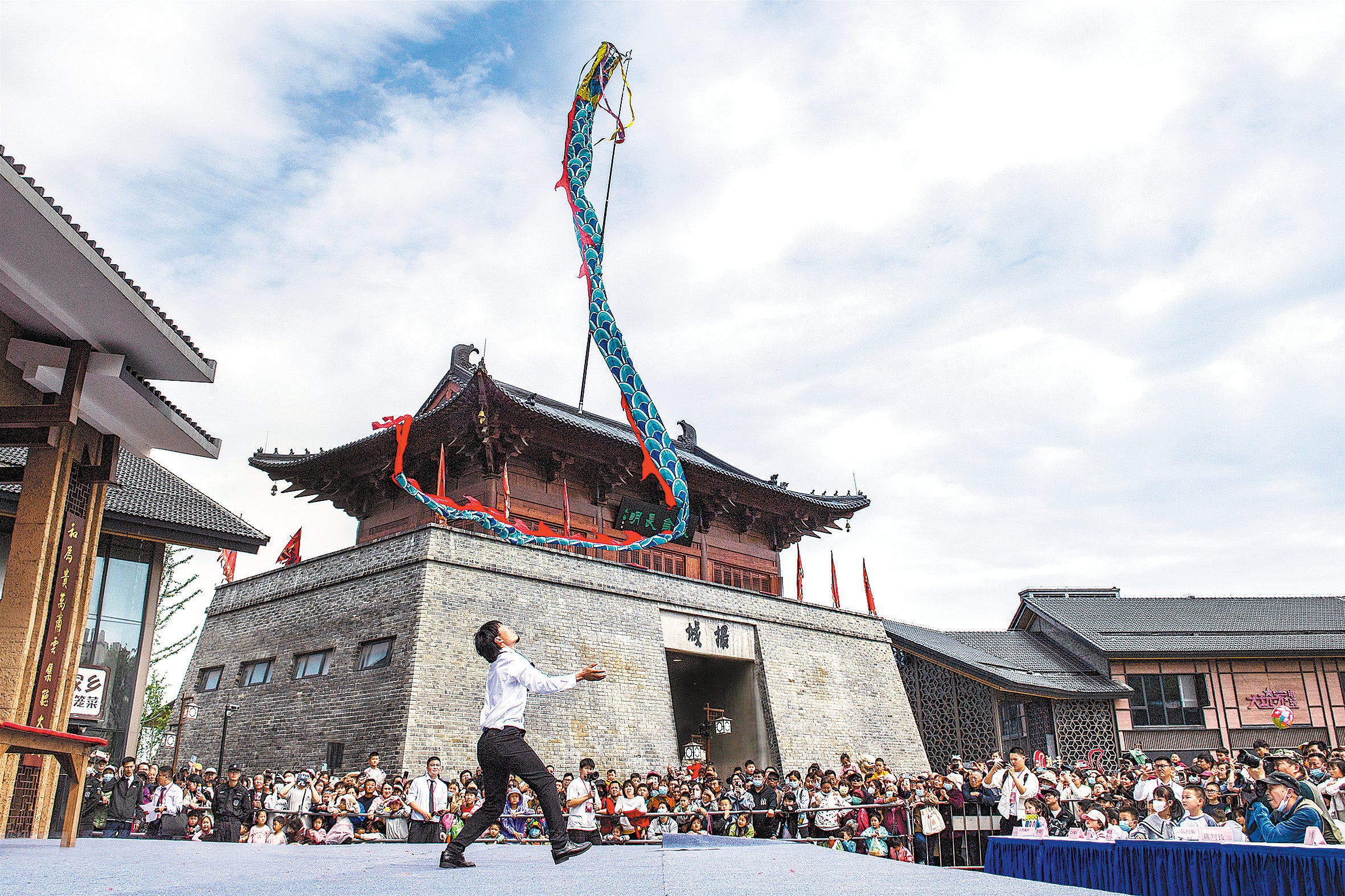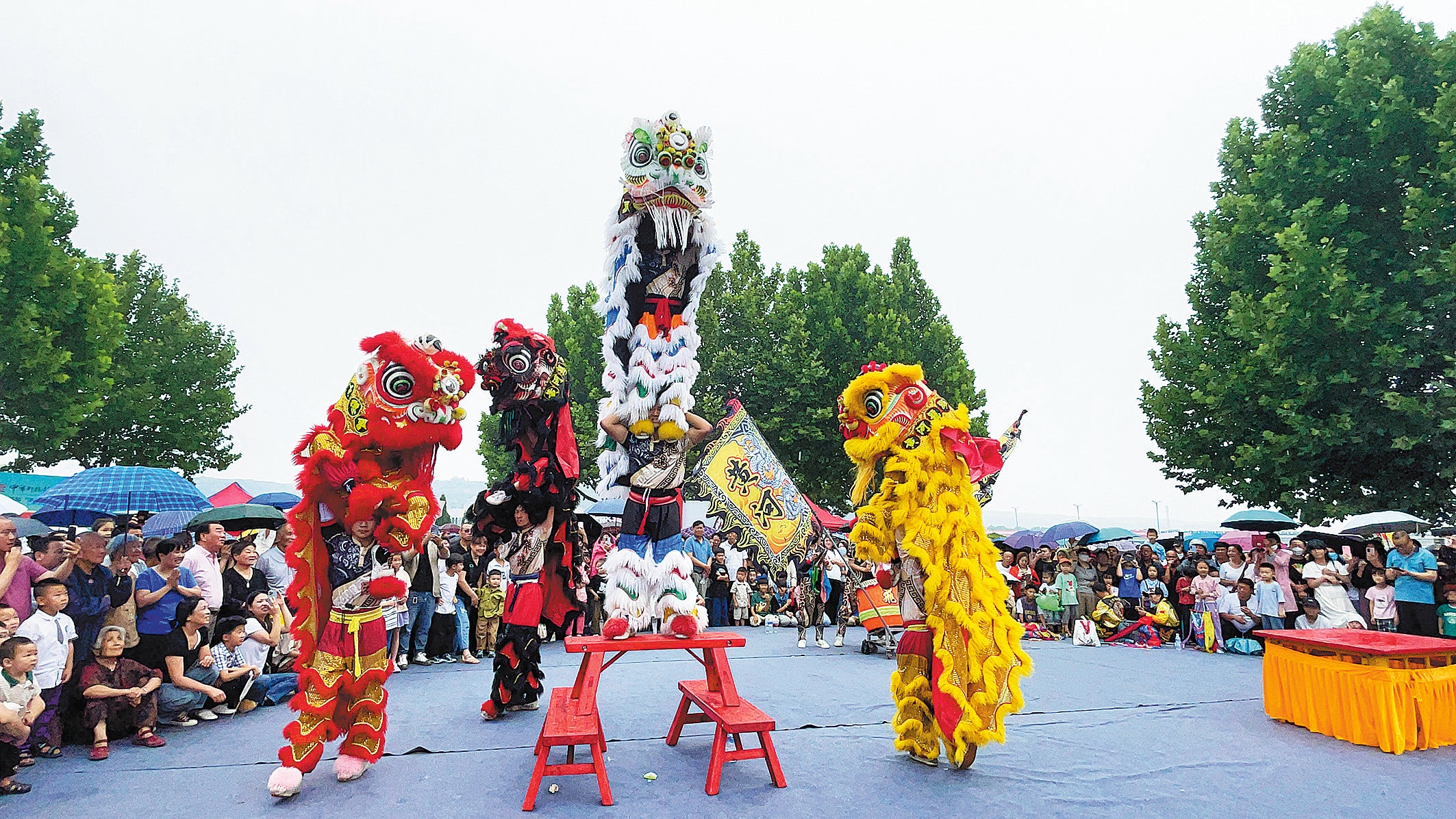Giving the lion dance more bite
THE ARTICLES ON THESE PAGES ARE PRODUCED BY CHINA DAILY, WHICH TAKES SOLE RESPONSIBILITY FOR THE CONTENTS

The lively and robust beat of gongs and drums from Yang Feilong’s training facility can be heard more than a mile away.
As the door is pushed open, the sound floods the air and is abruptly overwhelming, while a group of young people dressed in multi-coloured lion-shaped costumes jump into view.
They nimbly move on the densely arranged iron piles, fixed to the ground, of varying heights, while completing agile flips and twists to showcase an extraordinary performance that exudes the charm of local folk culture.
Through their manoeuvres, the dancing lion takes on a life of its own, displaying a variety of poses, from sitting and crouching to drinking water and licking its tail.
“The key lies in cooperation among the performers,” says Yang, who observes the lion dance practices and gives his instructions.
“You also have to know how to exert force and put your heart into the performance, so the lion can be presented in a way that it looks real,” adds Yang, who was recently named a model young inheritor of lion dance in Xitao town, Wuzhi county, Jiaozuo city, Central China’s Henan province, by the provincial intangible cultural heritage protection centre.
There is an ancient tradition in China of dancers wearing masks to resemble animals or mythical beasts. A popular legend about the origin of the lion dance suggests that, before the Han Dynasty (206 BC-AD 220), due to the Silk Road, a few lions had reached the Central Plains from the western area of ancient China.

At that time, people mimicked the appearance and actions of the newly arrived lions in a performance that later evolved into the lion dance, which became popular during the Tang Dynasty (618-907).
After that, the lion dance became synonymous with traditional, cultural and religious festivals, such as Chinese Lunar New Year. It has also spread abroad, as overseas Chinese established lion dance clubs to celebrate their traditional events in foreign lands.
To date, the lion show is divided into southern and northern schools. The northern lion’s appearance mostly resembles a real creature, with a lion head. The southern takes inspiration from opera facial styles, featuring vibrant colours and meticulous craftsmanship.
The Xitao lion dance falls into the northern category. It was founded during the Qing Dynasty (1644-1911) by Yang’s family, whose ancestors were martial arts experts.
In the 1990s, Yang’s grandfather set up a martial arts school in the town, and students were selected to perform lion dances during major celebrations. It exposed Yang to the distinctive dance at an early age.
In 2001, his grandfather led a team of more than 20 students to engage in a martial arts exchange in Guangdong province, where he saw the southern-style lion dance, which was more standardised and, he felt, had a certain panache.
It prompted him to look into it, so he sent eight trainees, including Yang, to one of the biggest lion dance schools in Guangdong in 2003. In 2008, when Yang returned home, more than 200 of his fellow villagers rolled out the red carpet in welcoming him back.
That same year, Yang founded his own lion dance troupe.
He further integrated the northern lion dance elements, which highlight martial arts, with the more diverse costumes and celebrating vibes of the southern style.
Under Yang’s guidance, local lion dance societies were established to draw in young people.
He also worked with folk artists and jointly delivered an innovative flying dragon show that won first prize at the 13th National Dragon and Lion Dance Championships in 2021.
Built on the traditional dragon dance, it uses a redesigned main body, which has a cylindrical shape, creating a three-dimensional and lifelike appearance.
The performers wield a long pole to make the dragon airborne and move gracefully, as the dragon’s body is inflated with air from head to tail.
Due to its relatively easy operation, Yang has also been actively promoting it as a physical fitness activity for the public. He has founded more than 100 dragon-flying training facilities across the country.
So far, those facilities have registered about 10,000 members annually, many of whom are middle- school students, Yang says.
